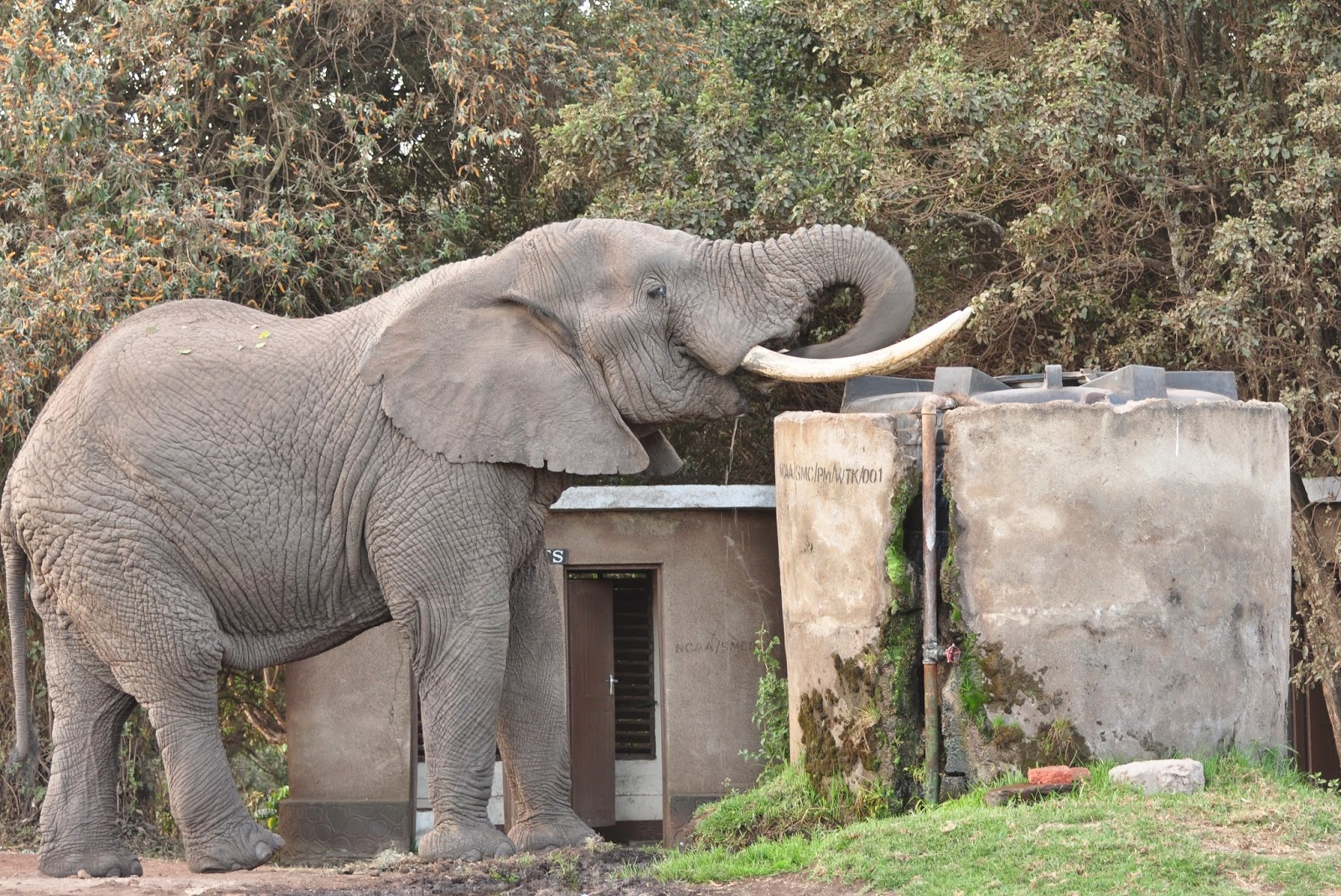It was a long dusty drive from the lunch stop to a short diversion to the Olduvai Gorge. It is the place where a number of the earliest humanoid remains have been found. The famous "Lucy" was found nearby. The archaeologists like to call the area the birthplace of humans. The scenery isn't that interesting but the history is. There is an interpretive centre with some photos of some of the dig sites including a set of tracks made by the ancient humans. There wasn't much in the way of animals other than a small flock of Garden Bulbuls (below).
The campsite was a welcome sight. The view across the crater was fantastic but for everyone in the group, the sower block was the most welcome. Flushing site down toilets, nice hot showers and very clean. It was a welcome relief after the terror in the Serengeti. After we'd made ourselves look pretty we settled back to take in the views of the crater, the gathering storm clouds and the sunset.
Just as we were starting to relax the campsite received a visitor (below). He was strangely quiet considering his bulk.
He boldly wandered past our tents & vehicles giving a huge amount of excitement to the campers who seemed to forget that this is one of the most dangerous wild animals in Africa. Many of them were getting very close to him trying to take photos not to mention making lots of noise.
We found out why he'd come to camp. The water tank! This photo shows how big the elephants can get. That's a toilet block next to the water tank. All it would take is for someone to get too close & he'd crush them like a bug.The bull elephant finished up his drink & wandered behind the mess area with the crazy snap happy tourists on his heals. You can now understand why particularly the kitchen & mess areas are protected by mesh.
I was keeping my distance from this massive creature but at one point there were about 25 people starting to crowd the elephant & he eventually made a half charge scattering the shutter bugs. Why they were surprised is a mystery to me. Catherine went very close to copping a whack from his trunk from between the two buildings.
I think the big bull wanted some peace & turned into the scrub behind the camp kitchen disappearing into the greenery.
That excitement over we went back to watching the sun go down.
We had dinner, charged up our camera batteries & settled down next to the camp fire.
We had dinner, charged up our camera batteries & settled down next to the camp fire.
The elephant wasn't the only visitor to the camp. As we were heading to the tents for the night a small herd of zebra were mowing the grass for us. We would hear them again a couple of times during the night snipping away at the grass. They sounded like they were right next to the tents.
Tomorrow would be our last day on safari. We were excited to check out the crater but a bit sad that is was going to come to an end soon.
Tomorrow would be our last day on safari. We were excited to check out the crater but a bit sad that is was going to come to an end soon.













